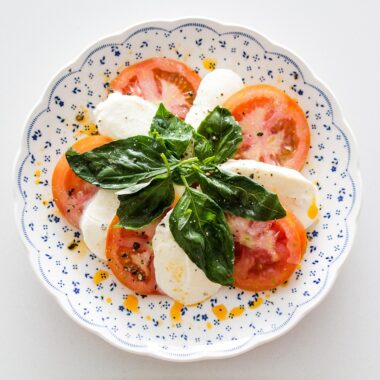Thai iced coffee, known locally as “Oliang” or “Kafae Yen,” is a beloved beverage that combines bold coffee flavors with creamy sweetness and a refreshing chill. This Southeast Asian treat has gained international popularity for its unique taste and versatility. Whether you’re a coffee aficionado or just looking to cool off with a flavorful drink, Thai iced coffee offers a delightful experience. In this article, we’ll dive into its history, explore traditional and modern recipes, and provide tips to perfect your brew at home.
A Brief History of Thai Iced Coffee
Coffee isn’t native to Thailand, but it found its way into the country centuries ago, likely through trade routes and colonial influences. By the 19th and 20th centuries, coffee cultivation began in northern Thailand, particularly in the Chiang Rai and Chiang Mai regions, where the climate suited Arabica and Robusta beans. Thai iced coffee as we know it today evolved from a fusion of local tastes and practical needs—Thailand’s hot, humid climate demanded a cold, refreshing drink.
The traditional preparation, called “Oliang,” has roots in Chinese immigrant communities in Thailand. Vendors originally brewed strong coffee with spices like cardamom or chicory, strained it through a cloth filter, and served it over ice with sweetened condensed milk. Over time, this evolved into the creamy, sweet version popularized in Thai street markets and cafes worldwide. Today, Thai iced coffee stands out for its robust flavor, balanced sweetness, and adaptability to modern palates.
What Makes Thai Iced Coffee Unique?
Unlike a typical iced latte or cold brew, Thai iced coffee is defined by its intensity and sweetness. The coffee is brewed strong—often double the strength of Western-style coffee—to stand up to ice and rich dairy components. Sweetened condensed milk, a staple in Thai cuisine, adds a luscious texture and caramel-like sweetness, while evaporated milk or cream can enhance the smoothness. Some recipes incorporate spices or alternative sweeteners, making it a playground for experimentation.
The drink is typically served in a tall glass with layers of coffee, milk, and ice, creating a visually appealing gradient. Its versatility allows for endless variations, from vegan adaptations to spiked versions with a splash of liquor. Let’s explore how to make it, starting with the classic recipe.
Classic Thai Iced Coffee Recipe
This is the traditional version you might find at a Bangkok street stall or a Thai restaurant. It’s simple, bold, and oh-so-satisfying.
Ingredients (Serves 1)
- 2 tablespoons strong ground coffee (preferably a dark roast or Thai coffee blend)
- 1 cup boiling water
- 2–3 tablespoons sweetened condensed milk
- 1 tablespoon evaporated milk or heavy cream (optional)
- Ice cubes
- A pinch of ground cardamom (optional, for authenticity)
Equipment
- Coffee maker, French press, or traditional Thai cloth filter (tungdtom)
- Tall glass
- Spoon
Instructions
- Brew the Coffee: If using a Thai coffee blend (often pre-mixed with chicory or spices), prepare it traditionally by placing 2 tablespoons of grounds in a cloth filter bag. Pour 1 cup of boiling water through the filter into a heatproof container, letting it drip slowly. For a modern approach, use a French press or drip coffee maker with dark roast grounds. Add a pinch of cardamom during brewing for a subtle spice note.
- Cool Slightly: Let the brewed coffee sit for a minute or two. It should be strong and slightly bitter to balance the sweetness later.
- Prepare the Glass: Fill a tall glass with ice cubes, leaving room for the coffee and milk.
- Mix the Coffee and Milk: In a separate container, combine the hot coffee with 2–3 tablespoons of sweetened condensed milk, stirring until fully dissolved. Taste and adjust sweetness if needed. Add 1 tablespoon of evaporated milk or cream for extra richness, if desired.
- Assemble: Pour the coffee mixture over the ice. Stir gently to chill it and create a swirled effect with the milk.
- Serve: Pop in a straw and enjoy immediately. The coffee will mellow as the ice melts, blending the flavors.
Tips
- Thai coffee blends like Pantai or Café Du Monde (with chicory) mimic the street-style taste.
- If the coffee tastes too strong, dilute it slightly with water before adding milk.
- For a layered look, pour the condensed milk into the glass first, add ice, then slowly pour the coffee over the back of a spoon.
Modern Variations of Thai Iced Coffee
The classic recipe is just the beginning. Here are three creative twists to suit different tastes and dietary preferences.
1. Vegan Thai Iced Coffee
With plant-based diets on the rise, this version swaps dairy for creamy alternatives without sacrificing flavor.
Ingredients (Serves 1)
- 2 tablespoons dark roast coffee grounds
- 1 cup boiling water
- 2–3 tablespoons sweetened coconut condensed milk (available in specialty stores or homemade)
- 1 tablespoon coconut cream or oat milk
- Ice cubes
- A dash of cinnamon (optional)
Instructions
- Brew the coffee as in the classic recipe.
- Stir in sweetened coconut condensed milk until dissolved. Add coconut cream or oat milk for extra body.
- Pour over ice, sprinkle with cinnamon if desired, and serve.
Why It Works
Coconut milk echoes Thailand’s culinary heritage, while oat milk offers a neutral, creamy base. The result is still rich and satisfying.
2. Spiced Thai Iced Coffee
For a warmer, aromatic twist, infuse your brew with spices reminiscent of Thai tea or chai.
Ingredients (Serves 1)
- 2 tablespoons dark roast coffee grounds
- 1 cup boiling water
- 1/4 teaspoon ground cardamom
- 1/8 teaspoon ground cinnamon
- Pinch of ground star anise or cloves (optional)
- 2 tablespoons sweetened condensed milk
- Ice cubes
Instructions
- Mix the coffee grounds with the spices before brewing. Prepare using your preferred method.
- Stir in sweetened condensed milk until smooth.
- Pour over ice and stir well. Garnish with a cinnamon stick if feeling fancy.
Why It Works
The spices add depth, making this version perfect for cooler days or as a dessert drink.
3. Thai Iced Coffee Float
Turn your coffee into a decadent treat with a scoop of ice cream.
Ingredients (Serves 1)
- 2 tablespoons strong coffee grounds
- 1 cup boiling water
- 2 tablespoons sweetened condensed milk
- 1 scoop vanilla or coffee ice cream
- Ice cubes
- Whipped cream (optional)
Instructions
- Brew the coffee and mix with sweetened condensed milk.
- Fill a glass with ice, pour the coffee mixture over it, and top with a scoop of ice cream.
- Add whipped cream for extra indulgence, if desired.
Why It Works
The ice cream melts into the coffee, creating a creamy, dessert-like texture that’s pure bliss.
Perfecting Your Thai Iced Coffee
Making Thai iced coffee is as much an art as a science. Here are some tips to elevate your game:
Coffee Choice
- Roast: Dark roasts like French or Italian work best for their bold, smoky notes. Robusta beans, common in Thailand, add a punchy bitterness.
- Grind: Medium-coarse is ideal for most brewing methods. Too fine, and it might clog filters or taste muddy.
Sweetness Balance
- Start with 2 tablespoons of condensed milk and adjust to taste. If it’s too sweet, cut back or dilute with a splash of water.
- For a lighter option, mix in regular milk or a non-dairy alternative before adding condensed milk.
Ice Matters
- Use large cubes to slow melting and prevent dilution. Crushed ice works for a slushier texture but weakens the flavor faster.
Presentation
- Serve in a clear glass to showcase the layers. A metal straw adds a fun, authentic touch.
Pairing Thai Iced Coffee with Food
Thai iced coffee’s sweetness and intensity make it a versatile companion to various dishes:
- Spicy Thai Food: The creaminess offsets the heat of curries or pad thai.
- Desserts: Pair it with mango sticky rice or coconut-based sweets for a tropical vibe.
- Breakfast: Enjoy it with a savory Thai omelet or pastries for a balanced start.
The Cultural Connection
Beyond its taste, Thai iced coffee reflects Thailand’s knack for blending tradition with innovation. Street vendors still use cloth filters and stovetop brewing, while cafes in Bangkok or Chiang Mai experiment with cold brew and artisanal beans. It’s a drink that bridges generations and borders, inviting everyone to take a sip of Thai hospitality.
Conclusion
Thai iced coffee is more than a beverage—it’s a customizable delight that brings a taste of Thailand to your kitchen.
Whether you stick to the classic recipe or try a modern twist, the key is balancing strong coffee with sweet, creamy elements. Experiment with spices, milks, or even a boozy splash to make it your own. Next time you’re craving something cool and bold, whip up a glass and let the flavors transport you to a bustling Thai market. What’s your favorite way to enjoy it?


















